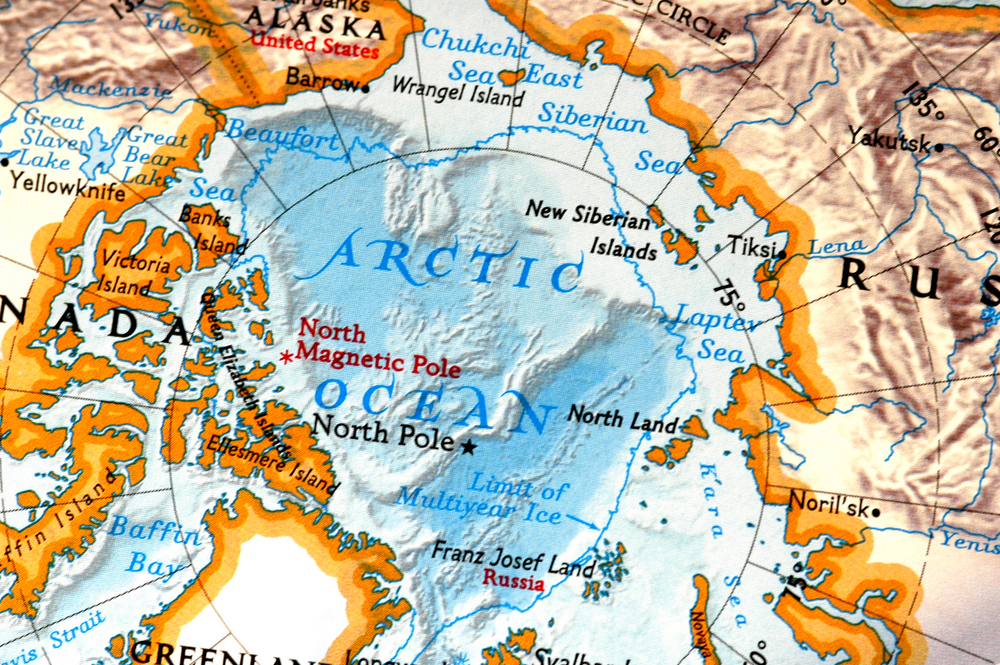
Right on time for the surge of holiday travel, a new iteration of the World Magnetic Model (WMM) has just been released, forecasting the future of Earth’s magnetic field. The updated model shows the latest location of the magnetic north pole, which has been gradually shifting toward Siberia over the past decades.
What is the World Magnetic Model?
The WMM, required to update every five years, follows changes in Earth’s magnetic field. The model provides crucial information for the airline and shipping industries, which need to update navigation systems to reflect the recent data. The WMM is the standard model used by several U.S. government agencies and international organizations, and it even impacts civilians who rely on accurate GPS directions to reach their destination.
The new WMM2025 was released last week, and it will last until 2029. Amidst the constant changes in Earth’s magnetic field, the most notable one is the drifting of the magnetic north pole. The magnetic north pole is not the same as the geographic North Pole, the northernmost point of Earth’s axis (at latitude 90 degrees north).
Read More: Earth’s Magnetic Field Is Almost Similar to What it Was Like 3.7 Billion Years Ago
The Magnetic North Pole’s Drift
For over a century, the magnetic north pole has been slowly sweeping across the Arctic. Its position was first observed in 1831 in Nunavut, northern Canada, by British explorer James Clark Ross. Since then, it has been progressing further into the Arctic Ocean; at first, it was moving at about 15 kilometers per year, but starting in the 1990s, it began to accelerate to a speed of around 50-60 kilometers (~30-40 miles) per year. This hastened movement is caused by an ongoing process that occurs underneath Earth’s surface, often referred to as the dynamo theory.
Earth’s magnetic field is always in flux due to forces within the fluid outer core (underneath the rocky mantle), where the swirling of molten iron creates massive electrical currents. These currents, in turn, maintain Earth’s magnetic field.
As it turns out, a tug-of-war between two large magnetic lobes under Canada and Siberia has spurred the magnetic north pole’s movement. Changes in core flow between 1970 and 1999 elongated the Canadian lobe, ultimately giving the Siberian lobe the advantage. As a result, the magnetic north pole continues to coast toward Siberia. It will continue on this trend over the next decade, likely traveling 390-660 km (~240-410 miles) further.
A 2022 study published in Earth and Planetary Science Letters revealed that the magnetic north pole’s trajectory over the last century is only the most recent chapter of the long-lasting tug-of-war. By examining six sediment cores from Svalbard, a Norwegian archipelago in the Arctic Ocean, researchers found that the magnetic pole has wavered back and forth between Canada and Siberia over the past 22,000 years.
Over these 22,000 years, the magnetic pole has experienced periods of both stability and increased acceleration, coinciding with the appearance and disappearance of magnetic field patches.
The Role of Earth’s Magnetic Field
Earth’s magnetic field also plays an important role in protecting the surface from solar wind and coronal mass ejections, which propel plasma and magnetized particles from the Sun’s corona. Although our magnetic field guards us from these cosmic phenomena, there are times when geomagnetic storms are able to breach our atmosphere.
This can cause an array of problems, such as damaging satellites, disrupting radio communication, and causing blackouts. However, the storms are perhaps most notable for the stunning auroras they produce. Particularly strong storms hit Earth in May and October 2024, leading to colorful displays of lights that could be viewed in the night sky.
The magnetic field has weakened about 9 percent over the past 200 years, and an area between Africa and South America has experienced a significant reduction in magnetic intensity, garnering attention from scientists. This area, called the South Atlantic Anomaly, may be an early sign that Earth’s magnetic poles could reverse. Although this sounds intimidating, our planet has survived hundreds of pole reversals over the course of its existence. However, it is difficult to predict the potential impact of a new pole reversal since the last one occurred 780,000 years ago.
The weakening of the magnetic field, though, does not always lead to pole reversals, which take thousands of years to come into effect. The South Atlantic Anomaly may even disappear over time, as one 2022 study states that it is part of a recurring event that has occasionally popped up over the past 9,000 years. Though a pole reversal will likely not happen for millennia, scientists will continue to keep their eyes on variations within the magnetic field.
Read More: When North Goes South: Is Earth’s Magnetic Field Flipping?
Article Sources
Our writers at Discovermagazine.com use peer-reviewed studies and high-quality sources for our articles, and our editors review for scientific accuracy and editorial standards. Review the sources used below for this article:
Jack Knudson is an assistant editor at Discover with a strong interest in environmental science and history. Before joining Discover in 2023, he studied journalism at the Scripps College of Communication at Ohio University and previously interned at Recycling Today magazine.









Leave a Comment